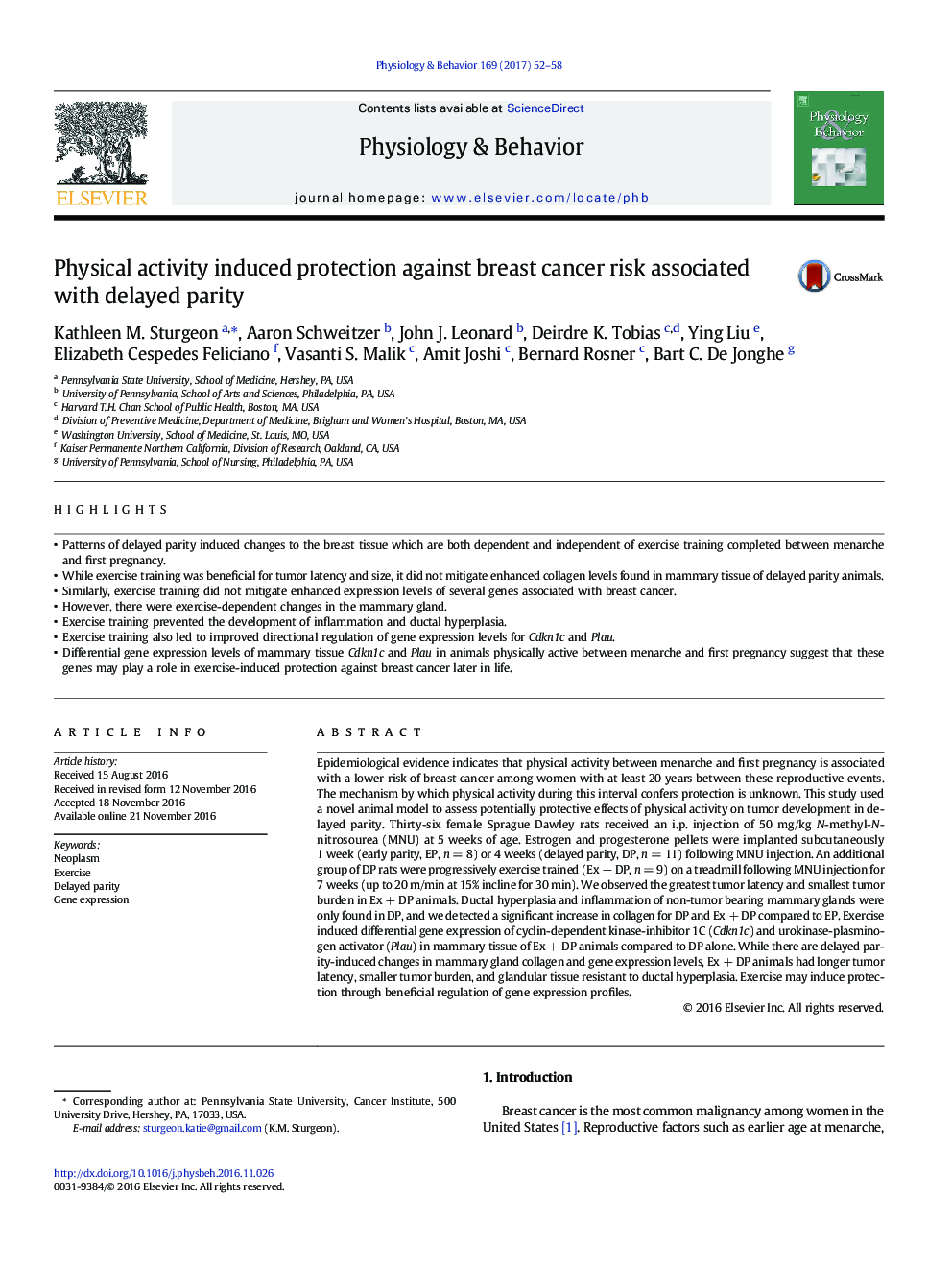| Article ID | Journal | Published Year | Pages | File Type |
|---|---|---|---|---|
| 5593993 | Physiology & Behavior | 2017 | 7 Pages |
Abstract
Epidemiological evidence indicates that physical activity between menarche and first pregnancy is associated with a lower risk of breast cancer among women with at least 20 years between these reproductive events. The mechanism by which physical activity during this interval confers protection is unknown. This study used a novel animal model to assess potentially protective effects of physical activity on tumor development in delayed parity. Thirty-six female Sprague Dawley rats received an i.p. injection of 50 mg/kg N-methyl-N-nitrosourea (MNU) at 5 weeks of age. Estrogen and progesterone pellets were implanted subcutaneously 1 week (early parity, EP, n = 8) or 4 weeks (delayed parity, DP, n = 11) following MNU injection. An additional group of DP rats were progressively exercise trained (Ex + DP, n = 9) on a treadmill following MNU injection for 7 weeks (up to 20 m/min at 15% incline for 30 min). We observed the greatest tumor latency and smallest tumor burden in Ex + DP animals. Ductal hyperplasia and inflammation of non-tumor bearing mammary glands were only found in DP, and we detected a significant increase in collagen for DP and Ex + DP compared to EP. Exercise induced differential gene expression of cyclin-dependent kinase-inhibitor 1C (Cdkn1c) and urokinase-plasminogen activator (Plau) in mammary tissue of Ex + DP animals compared to DP alone. While there are delayed parity-induced changes in mammary gland collagen and gene expression levels, Ex + DP animals had longer tumor latency, smaller tumor burden, and glandular tissue resistant to ductal hyperplasia. Exercise may induce protection through beneficial regulation of gene expression profiles.
Keywords
Related Topics
Life Sciences
Biochemistry, Genetics and Molecular Biology
Physiology
Authors
Kathleen M. Sturgeon, Aaron Schweitzer, John J. Leonard, Deirdre K. Tobias, Ying Liu, Elizabeth Cespedes Feliciano, Vasanti S. Malik, Amit Joshi, Bernard Rosner, Bart C. De Jonghe,
